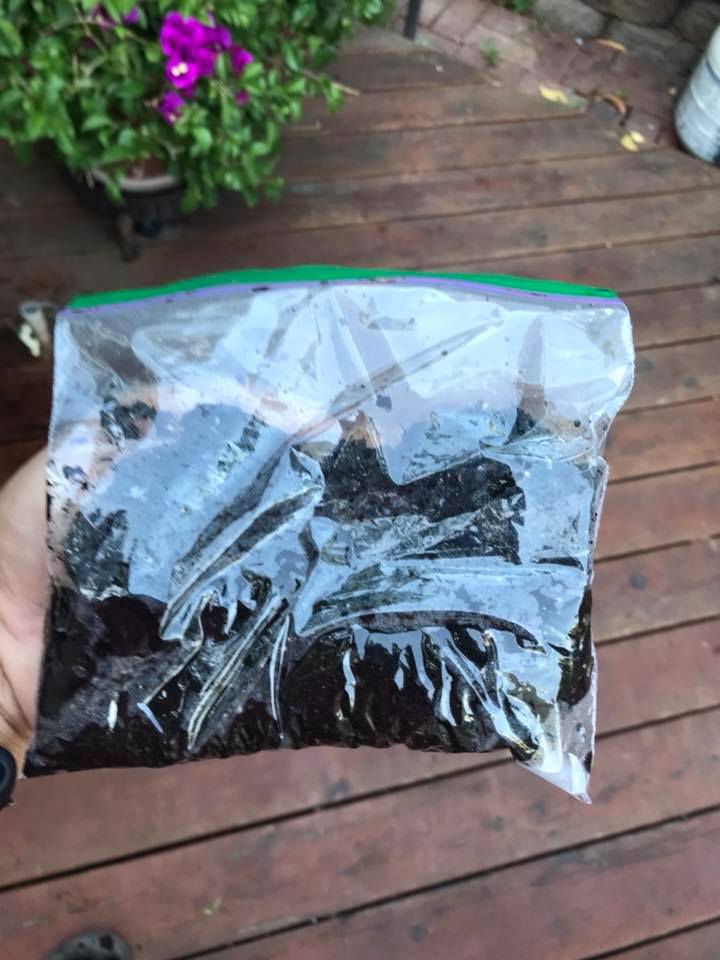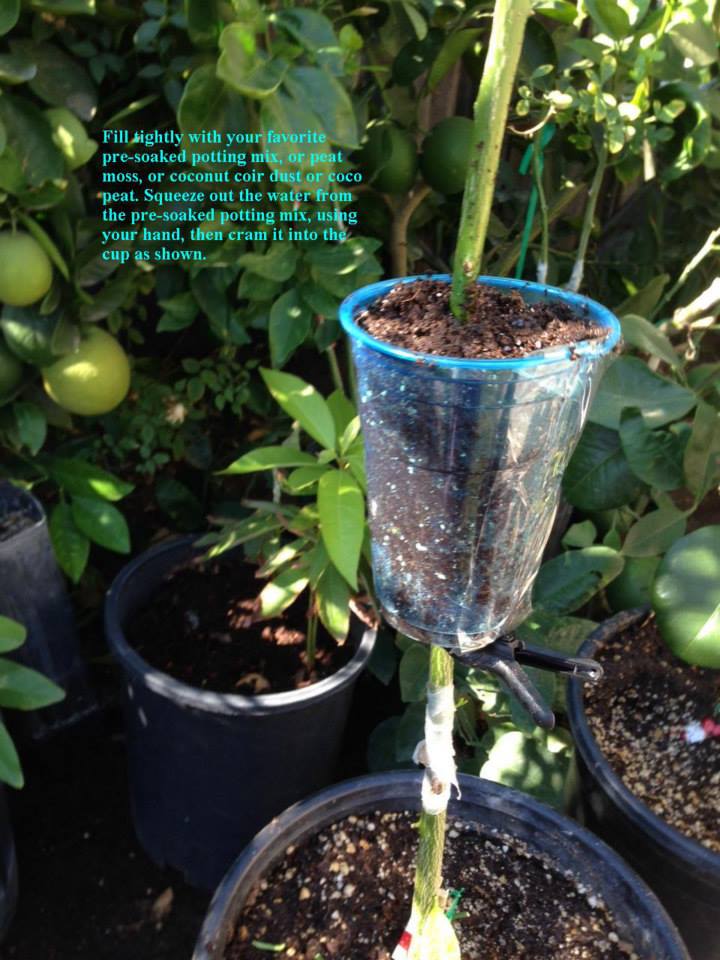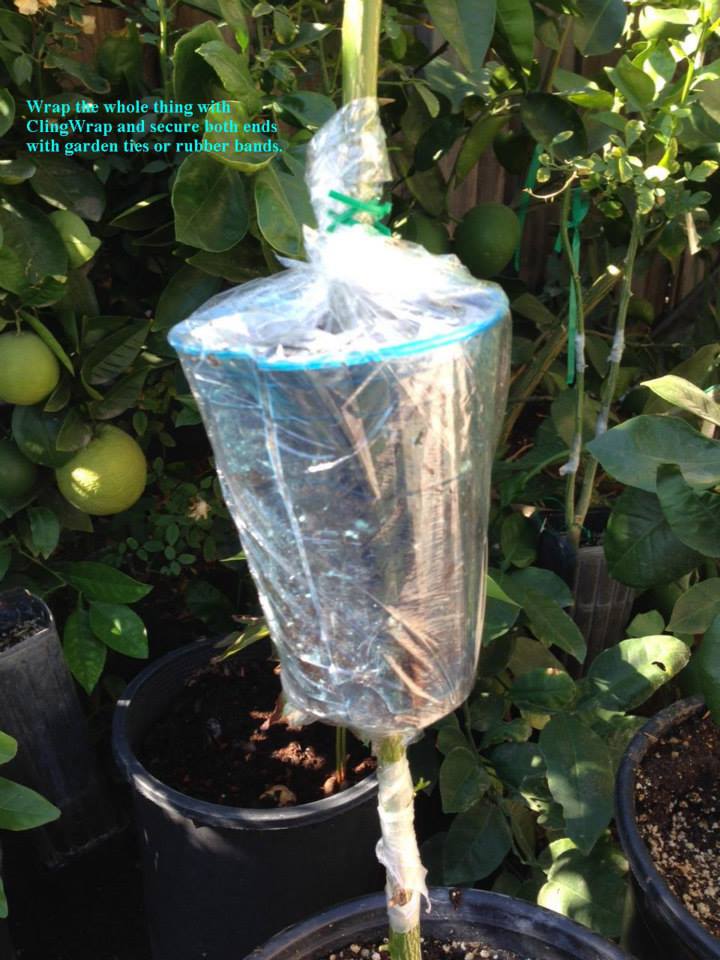Can’t wait to buy Duke avocado fruits to make rootstock seedlings so I tried air layering or marcotting my Duke tree. Am experimenting with different branch ages. I’ve read that younger branches are easier to root than older ones. We shall see! I’ve improved the basic technique and I will make an update maybe after 3 months.
Air layering can be done on most plants. It can be done on blueberries, citruses, plums, apples, vines, papayas, roses… Usually the best time to do is when the bark starts to slip like early days of spring when you see growth flushes and you can do it well into summer.
Prepare a branch for air layering by removing the leaves where you want it to root. in this case about 2"-4" from the main branch.
Score around the limb with a sharp knife, cutting the bark only and stopping at the wood. Make two circular cuts about 1/2" wide band.
Then remove the ring of bark.
Ring of bark completely removed.
slice lightly starting at an inch above the ring of bark to expose the cambiums of the limb to enhance more places for rooting.
the side slice is done.
Do the other side also.
slightly scrape off the exposed wood, all around to remove most of the cambium cells on the hard wood.
this is a seed start potting media, thoroughly wet, and placed inside a sandwich ziploc bag, just enough media to cover the limb about 1" all around.
split one side of the bag open in the middle.
spread apart the cut area of plastic and then wrap it around to cover the exposed wood on the limb.
wrap very tightly until the water oozes out of the media. then poke a couple of holes on the bag with a BBQ stick. And it’s done.
And all you have to do is wait. You may need to inject water if it dries out, so observe every other week! I tried different sized branches and ages to see which one would be easier. Make sure to anchor your rooting bags so that they don’t move around or slide up and down. if they move around, it will snap off the developing roots.
You can optionally add rooting hormone and fungicide to the cut area. Here, I used diluted honey followed up with cinnamon before enclosing it with rooting media. Some rooting media that you buy will contain rooting hormone already, but they’re too expensive for me. So I use honey and cinnamon.
this one marcotted Calamondin. Hopefully after three months, I will have a new plant!
And when you see roots forming and decide to cut it off and transplant, beware of the most common mistake in transplanting the marcot. When cut as is and then planted it could wilt and die. You’ll have to reduce the canopy size of your marcot in proportion to the size of the root system that has developed, and that means reducing the canopy size down to 1/4 or less by removing 3/4 of the canopy on the marcot. If you have bigger bag and bigger root system, you can retain bigger sized canopy. You prune the marcot while it is still attached, not after you cut it. This way, your marcot won’t lose a lot of water while you prepare the transplanting site. You only cut the prepared marcot from the mother tree when you’re ready to plant it immediately, so the marcot is prepped beforehand. You can retain the marcot as is, fruits and all, without pruning if you pot it in bigger container and then placed inside in a high humidity plant growth chamber so that it can further develop its roots without wilting and dying.
Depending on the type of plant that you air layer, don’t expect these plants to have the same strength as those plants with primary tap root system such as those grafted to seedlings. Some marcotted plants develop nice strong roots as well, but not all of them. Marcotted plants that don’t produce good root system are ideal for container growing as they can remain dwarf and are slow growers.






































